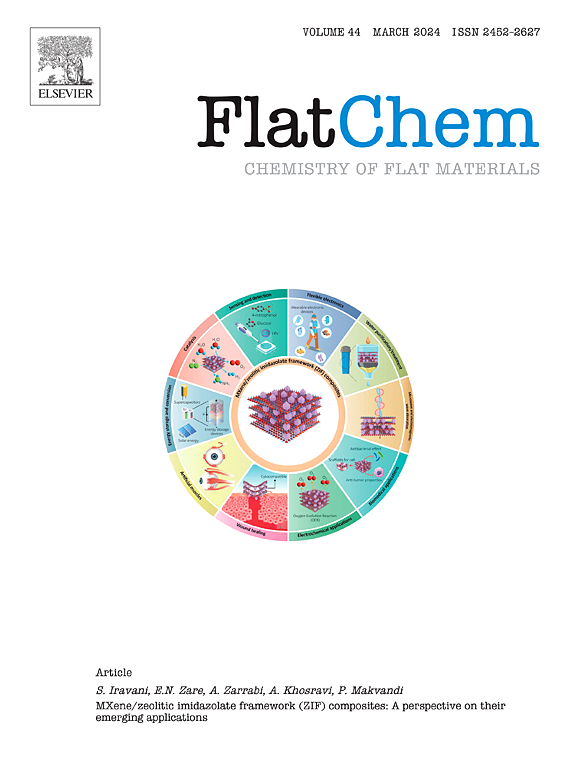High areal capacity and energy density 3D-printed Li-ion battery enabled by silver nanoparticles embedded in cross-linked activated carbon/reduced graphene oxide
IF 6.2
3区 材料科学
Q2 CHEMISTRY, PHYSICAL
引用次数: 0
Abstract
Creating lithium-ion batteries (LIBs) with high areal capacity and energy density remains a significant challenge. Thick electrodes with increased thickness show a potential attitude toward improved areal capacity. However, the energy density of thick electrodes is hindered by poor electrolyte infiltration and charge/ion transportation. This study employed material extrusion (ME) technology to fabricate a thick 3D-printed electrodes incorporating highly conductive silver nanoparticles (AgNPs), cross-linked activated carbon-reduced graphene oxides (ACrGO), and Li4Ti5O12 (LTO) particles as the functional ink. ACrGO, which is integrated with a conductive AgNP network, facilitates charge and ion transport in 3D-printed electrodes with abundant channels, and imparts high electrical conductivity. A 3D-printed AC@rGO-AgNPs-LTO anode with a thickness of 350 μm demonstrated a high discharge capacity of 197.8 mAh g−1 at 0.1C, 141.9 mAh g−1 at 1C, and maintained 84.3 % of its capacity after 200 cycles, and achieved an areal capacity of 7.0 mAh cm−2 with a high mass loading of 53.25 mg cm−2 (1112 μm). Coupled with a high-voltage 3D printed LiNi0.8Co0.1Mn0.1O2 (NCM811) cathode, a full cell delivers energy densities of 791.40 Wh kg−1 and 2131.86 Wh L−1. This research offers a promising approach for developing high-performance thick electrodes for LIBS requiring high energy density.

高面积容量和能量密度的3d打印锂离子电池是由嵌入交联活性炭/还原氧化石墨烯的银纳米颗粒实现的
制造具有高面积容量和能量密度的锂离子电池(lib)仍然是一个重大挑战。厚度增加的厚电极显示出提高面容量的潜在态度。然而,厚电极的能量密度受到电解质渗透和电荷/离子传输不良的阻碍。本研究采用材料挤压(ME)技术,将高导电性银纳米颗粒(AgNPs)、交联活性炭还原氧化石墨烯(ACrGO)和Li4Ti5O12 (LTO)颗粒作为功能墨水,制备了厚的3d打印电极。ACrGO与导电AgNP网络集成,有助于在具有丰富通道的3d打印电极中传输电荷和离子,并赋予高导电性。3d打印的厚度为350 μm的AC@rGO-AgNPs-LTO阳极在0.1C和1C下的放电容量分别为197.8 mAh g - 1和141.9 mAh g - 1,在200次循环后仍能保持84.3%的放电容量,面积容量为7.0 mAh cm - 2,质量负载为53.25 mg cm - 2 (1112 μm)。与高压3D打印LiNi0.8Co0.1Mn0.1O2 (NCM811)阴极相结合,完整电池的能量密度为791.40 Wh kg - 1和2131.86 Wh L - 1。该研究为开发高能量密度的LIBS高性能厚电极提供了一条有希望的途径。
本文章由计算机程序翻译,如有差异,请以英文原文为准。
求助全文
约1分钟内获得全文
求助全文
来源期刊

FlatChem
Multiple-
CiteScore
8.40
自引率
6.50%
发文量
104
审稿时长
26 days
期刊介绍:
FlatChem - Chemistry of Flat Materials, a new voice in the community, publishes original and significant, cutting-edge research related to the chemistry of graphene and related 2D & layered materials. The overall aim of the journal is to combine the chemistry and applications of these materials, where the submission of communications, full papers, and concepts should contain chemistry in a materials context, which can be both experimental and/or theoretical. In addition to original research articles, FlatChem also offers reviews, minireviews, highlights and perspectives on the future of this research area with the scientific leaders in fields related to Flat Materials. Topics of interest include, but are not limited to, the following: -Design, synthesis, applications and investigation of graphene, graphene related materials and other 2D & layered materials (for example Silicene, Germanene, Phosphorene, MXenes, Boron nitride, Transition metal dichalcogenides) -Characterization of these materials using all forms of spectroscopy and microscopy techniques -Chemical modification or functionalization and dispersion of these materials, as well as interactions with other materials -Exploring the surface chemistry of these materials for applications in: Sensors or detectors in electrochemical/Lab on a Chip devices, Composite materials, Membranes, Environment technology, Catalysis for energy storage and conversion (for example fuel cells, supercapacitors, batteries, hydrogen storage), Biomedical technology (drug delivery, biosensing, bioimaging)
 求助内容:
求助内容: 应助结果提醒方式:
应助结果提醒方式:


